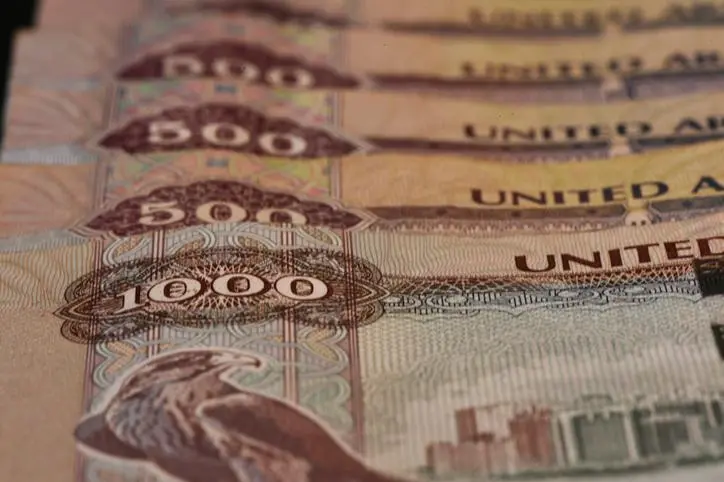PHOTO
LONDON - The economic picture may not have to change much for the surprise element to disappear for markets - underlining the significance of this summer's sometimes grudging admissions of investment strategy missteps.
And if you remove the surprise factor, will the year's anti-consensus stock market surge peter out, allowing bonds start to perform at last and the dollar to finally dissipate?
In basic terms, financial prices - theoretically at least - capture all available information and assumptions on the future.
And they move most forcefully when the facts confound those assumptions - just as this year's unfolding U.S. "soft landing" scenario, the peculiarly tight labor market and even the artificial intelligence boom have all managed to do.
With U.S. recession forecasts and interest rate cuts baked from the get go, the investment herd entered the year overwhelmingly underweight equity due to earnings worries and emphatically overweight bonds. Bets on Federal Reserve rate cuts by yearend stacked the chips against the dollar .
Banking stress in March - while it caught many off guard at the time - merely doubled down those bets and reinforced the year's consensus thinking.
And many asset managers - looking for cheaper valuations or currency plays - felt Europe, Japan or China shone brighter.
But by August, the widest possible index of U.S. equity - the Wilshire 5000 is up almost 20% - not to mention the 80% surge in the 10 biggest tech and digital megacaps or a 44% jump in the Nasdaq 100.
MSCI's all-country index is up 16% too - but clearly U.S.-based investors would have been better off staying at home and certainly not in China, whose equity benchmarks remain in the red for the year in dollar terms. Europe's main bourses and Japan's Nikkei have also undershot Wall St when converted to dollars.
The much-touted bond bounce has failed to materialise despite impressive U.S. disinflation of late - with both U.S. and Global Aggregate bond indices pretty much where they were at the start of the year, less than 1% higher. The dollar is only 1% lower against the most traded currencies and has climbed sharply on the Chain's yuan and Japan's yen.
It's not hard to see why the summer has been a season of reflection and rethinks in financial districts - bruising performance outcomes in some quarters, mea culpas in others and often just overdue re-positioning.
What to do? Face it down and hope the original analysis works out eventually - or change tack?
SURPRISE, SURPRISE
Along with market moves themselves and skewed positioning monitors, the simplest take on the unpreparedness of investors can be seen in economic surprise indices.
If you take out the wild swings in these indices in the year after the COVID pandemic hit, when consensus was slow to catch up with unprecedented and shocking developments, the U.S. economy was last month registering its most positive surprises for almost 20 years.
What's more, the U.S. surprise index has been consistently positive since early February, despite equity positioning remaining resolutely negative through June at least - indicating as much about the doggedly gloomy view from financial forecasters and markets as the reality of the economy itself.
And the U.S. case has indeed been exceptional. The global surprise index is close to zero, suggesting expectations for the world economy in aggregate are actually coming in on cue.
But, pandemic period apart, the excess of the U.S. index over the euro zone equivalent is at its widest since 2008 - and the gap with China at its widest in the 20 years of the series.
The big question for the rest of year is whether a big rethink of the economy and recalibrated forecasts by themselves now see those surprises fall away to zero - even if the economy continues to follow its hitherto market-moving path.
And if that happens, it may just suck the oxygen from the stellar equity outperformance over bonds to date.
'FAILURE BUDGET'
In an honest appraisal of a difficult year, Schroders' chief investment officer Johanna Kyrklund told clients this week the firm was reducing its underweight equity stance despite concern about valuations versus decent returns in cash. She also rejigged an overweight U.S. bonds view to shift toward European investment grade paper and local emerging markets debt.
"It is clear some of our positioning hasn't worked and we have struggled to catch a trend," she said, adding reducing or closing some defensive positions reflected "the reality that the expected slowdown has failed to materialise quickly enough."
"By cutting your losses or having other means of managing your psychology through difficult markets, you can preserve your emotional energy and your ability to take risk for when opportunities avail themselves," Kyrklund concluded.
"This allows you to use up your 'failure budget' slowly and live to fight another day in markets."
AXA IM Investment Institute Chair Chris Iggo, who predicted late last year that 2023 would be the 'Year of the Bond', offered his latest assessment of how the year has panned out so far in note call "Hard landing delayed, risk on"
"The soft landing scenario is very much priced in and for the U.S. at least, the data suggests it might be the softest of soft landings," he wrote on Friday. "The recession - if there is to be one - is delayed. Interest rates might have peaked but a long plateau could be ahead of us."
If true, markets may find the going harder without that element of surprise.
The opinions expressed here are those of the author, a columnist for Reuters
(by Mike Dolan, Twitter: @reutersMikeD.)























